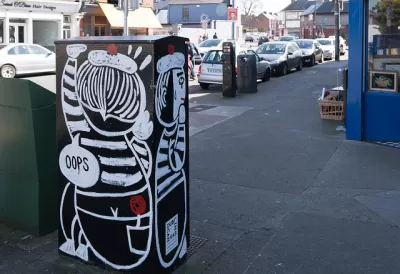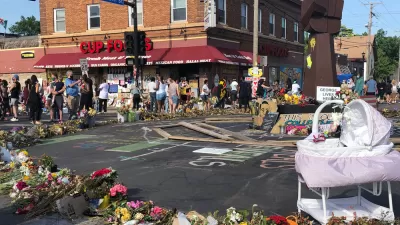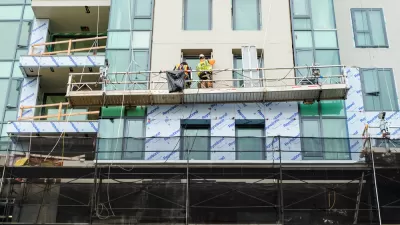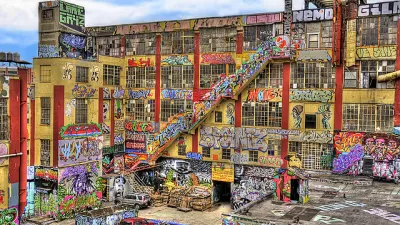There will be important functions in public space that are not always “art” whose value is not in proportion to their prettiness.

Rainey Knudson wants people to stop putting art on utility boxes. “In Houston, the underlying idea for our local box-painting effort is that it ‘converts blight into art by painting the blank canvases around the city,'” she wrote on Glasstire last week. "What’s not to love? Well for starters, when have you ever looked at a blank electrical box on the street and thought, ‘Gee, I wish someone with moderate artistic skills would paint a toucan on that?'"
Knudson’s critiques are a bit deeper than just complaining about the quality of the art work. First, she argues that we should let urban infrastructure blend into the background. ("Consider how, undecorated, these things disappear into the urban landscape. They aren’t 'blight'—certainly not in the way that litter or abandoned buildings are. Electrical boxes are something you probably never noticed, until your local municipality started decorating them.")
But the far more compelling argument is that it’s a way of spending public art money that is extremely limiting for artists. ("I think this bizarre trend has less to do with beautification than it does with cities wanting to take control of street art, to make it sanctioned, palatable, institutional, and toothless.")
Instead, Knudson proposes extremely open-ended public art proposals to be judged entirely on merit. I'd be interested to hear local officials' take on Knudson’s proposal.
However, it was a seemingly small comment Matthew Sekeletron—an artist from Troy, New York—made when he shared the article that has really stuck with me. Utility boxes are a common place to post flyers, and the poster suspected this was in part a sneaky way to combat that.Censhorthip.
FULL STORY: Could Public Art on Utility Boxes Displace Communication?

Alabama: Trump Terminates Settlements for Black Communities Harmed By Raw Sewage
Trump deemed the landmark civil rights agreement “illegal DEI and environmental justice policy.”

Planetizen Federal Action Tracker
A weekly monitor of how Trump’s orders and actions are impacting planners and planning in America.

The 120 Year Old Tiny Home Villages That Sheltered San Francisco’s Earthquake Refugees
More than a century ago, San Francisco mobilized to house thousands of residents displaced by the 1906 earthquake. Could their strategy offer a model for the present?

Ken Jennings Launches Transit Web Series
The Jeopardy champ wants you to ride public transit.

BLM To Rescind Public Lands Rule
The change will downgrade conservation, once again putting federal land at risk for mining and other extractive uses.

Indy Neighborhood Group Builds Temporary Multi-Use Path
Community members, aided in part by funding from the city, repurposed a vehicle lane to create a protected bike and pedestrian path for the summer season.
Urban Design for Planners 1: Software Tools
This six-course series explores essential urban design concepts using open source software and equips planners with the tools they need to participate fully in the urban design process.
Planning for Universal Design
Learn the tools for implementing Universal Design in planning regulations.
Clanton & Associates, Inc.
Jessamine County Fiscal Court
Institute for Housing and Urban Development Studies (IHS)
City of Grandview
Harvard GSD Executive Education
Toledo-Lucas County Plan Commissions
Salt Lake City
NYU Wagner Graduate School of Public Service





























